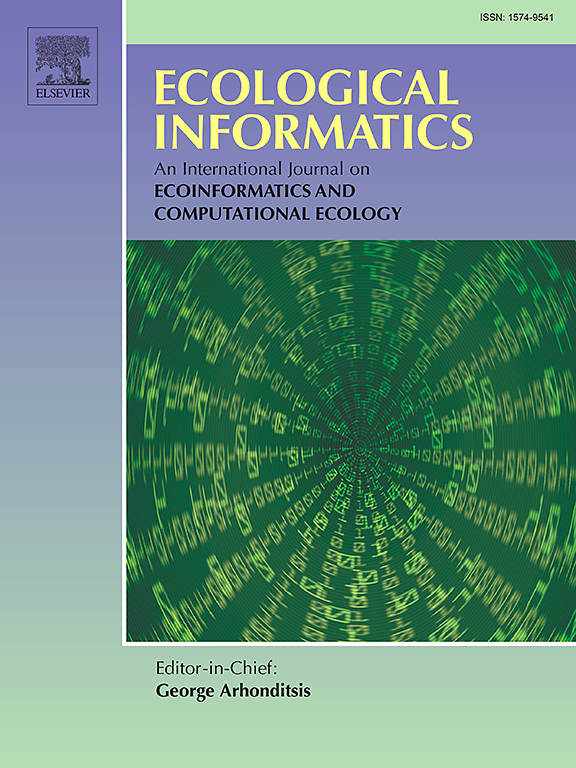Combining habitat selection, behavioural states, and individual variation to predict fish spatial usage near a barrier
IF 5.8
2区 环境科学与生态学
Q1 ECOLOGY
引用次数: 0
Abstract
Riverine barriers are threatening freshwater fish migration, with major impacts on fish populations. Effective management requires understanding of fish movement and behaviour as they approach a barrier and fish pass, which can inform optimal mitigation options and barrier management. Here, the movements of upstream migrating barbel Barbus barbus and grayling Thymallus thymallus near a barrier were analysed and results used to develop predictive models. Fish were tracked via 2D acoustic telemetry. Hidden Markov models were used to distinguish behavioural states and step selection functions were applied to determine habitat selection by the fish in each state. Model results were explored to assess the benefits of including behavioural state and understand state-specific habitat preferences, then cross-validated and used to develop an individual based model to predict fish spatial usage. Little difference existed in habitat selection between states and individual variation was high, limiting general trends that could be described. Overall, barbel preferred deeper or faster water while for grayling, few trends could be described. Under the tested flow conditions, high spatial usage was predicted in the area directly downstream of the barrier. In addition, barbel usage was high in the area by and downstream of the fish pass entrance but not for grayling, which may indicate a need to improve pass attractiveness for grayling. The predictive model produced directed upstream movements of fish similar to those expected for upstream migrating freshwater fish, highlighting model potential for fish passage applications in future iterations. The high individual variability in fish behaviour drives the need for individual-based approaches for predicting fish movement.

求助全文
约1分钟内获得全文
求助全文
来源期刊

Ecological Informatics
环境科学-生态学
CiteScore
8.30
自引率
11.80%
发文量
346
审稿时长
46 days
期刊介绍:
The journal Ecological Informatics is devoted to the publication of high quality, peer-reviewed articles on all aspects of computational ecology, data science and biogeography. The scope of the journal takes into account the data-intensive nature of ecology, the growing capacity of information technology to access, harness and leverage complex data as well as the critical need for informing sustainable management in view of global environmental and climate change.
The nature of the journal is interdisciplinary at the crossover between ecology and informatics. It focuses on novel concepts and techniques for image- and genome-based monitoring and interpretation, sensor- and multimedia-based data acquisition, internet-based data archiving and sharing, data assimilation, modelling and prediction of ecological data.
 求助内容:
求助内容: 应助结果提醒方式:
应助结果提醒方式:


